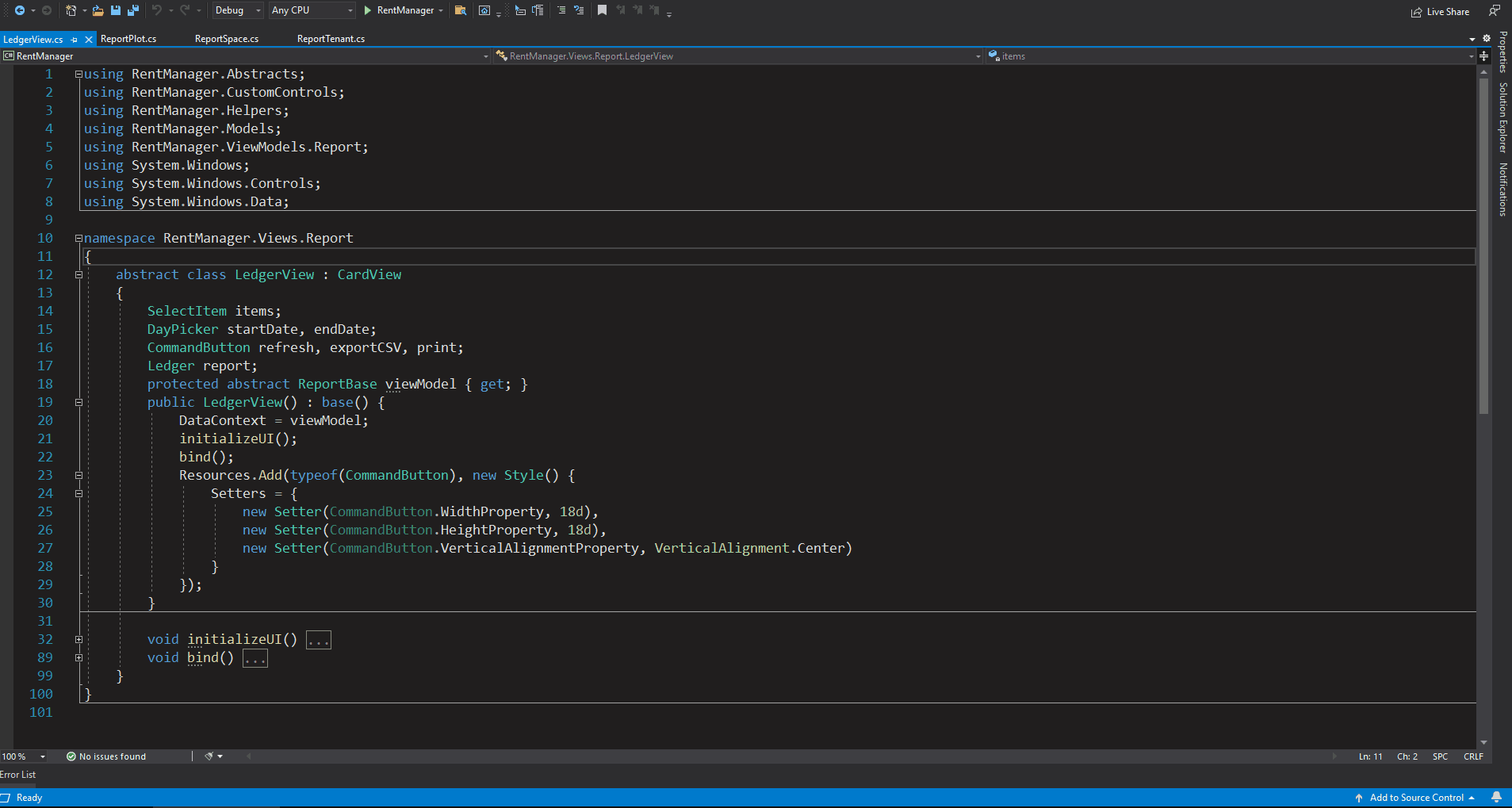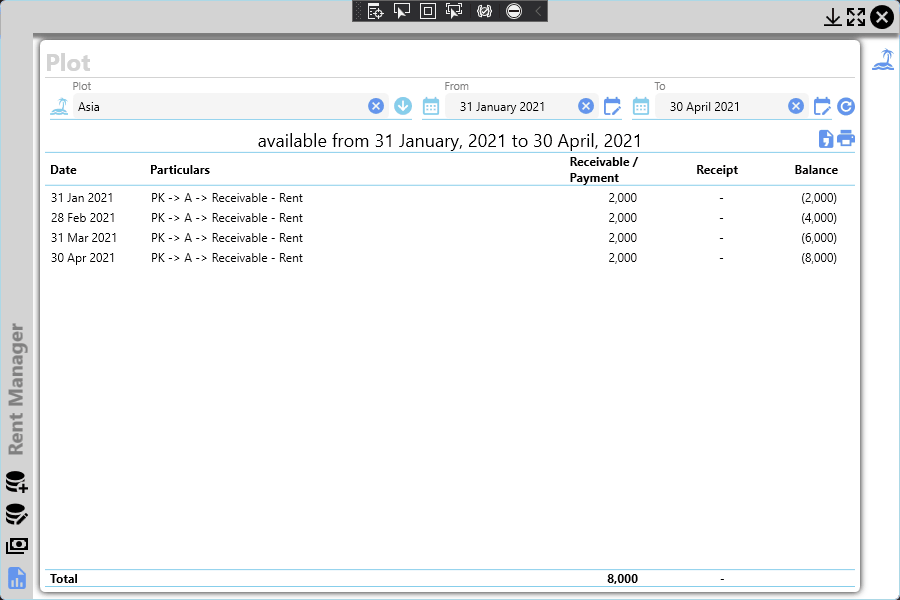For the three Report Views (Plot, Space, Tenant) I've used two abstract base classes, one for the view, LedgerView, and the other for the view model, ReportBase. In the ReportBase, I've an abstract property selectionView, which is bound to the ComboBox like control, and when I change selection in that control, it resets the Id property of the ReportBase and in the setter of Id property, I call updateReportables, that fetches data from database.
Reportables is a property of ReportBase and it points to a private field, reserved, of the ReportBase. Entries of that Reportables/reserved are displayed in the ListBox. ReportPlotVM, ReportSpaceVM and ReportTenantVM are subclasses of ReporBase and, at this moment, they just set the view for the selectionView property of ReportBase.
On the top-right corner, I've the refresh button and on click, a function, refreshReport, of ReportBase gets called and there in the first line, I've a LINQ and it throws a null reference exception! So reserved is null although, in Output, I see there are 4 items in the reserved:

nothing else touches the reserved other than refreshReport and updateReportables functions.
For the views, the base LedgerView has an abstract property, viewModel, of type ReportBase and this viewModel property becomes the DataContext for those views. ReportPlot, ReportSpace and ReportTenant are subclasses of LedgerView and they just set the viewModel property of the the LedgerView:

In the previous version of this app, I don't have this problem because I haven't use base view, LedgerView, like this and I set DataContext for each of those view separately. Now, as I'm simplifying and updating the app, I want to use the base LedgerView for all of them since their look and functionalities are same.
Why do I get that exception?




